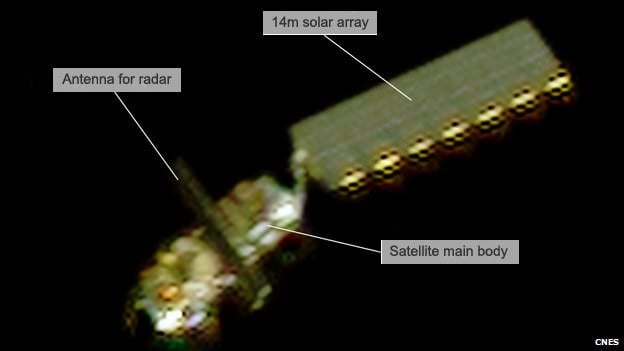[/caption]
ESA's mysteriously silent Envisat Earth observing satellite has been observed and imaged by another satellite in space. France's space agency (CNES) pulled off an on-orbit coup, using their high-resolution Pleiades satellite to take a picture of Envisat from about 100 km. The good news is that engineers were able to determine Envisat is fully intact and has not been obviously damaged by impacts by space debris or meteoroids. The massive Envisat fell silent on April 8 after 10 years of service – twice its designed lifetime -- providing high quality images and data of our changing Earth.
"We are really grateful to CNES for offering to acquire images of Envisat using their Pleiades and Spot satellites," said Volker Liebig, ESA's Director of Earth Observation Programs. "Additional observations being acquired across the globe show how the international space community has come together to track this veteran satellite."
Previous optical, radar and laser observations of Envisat show it is still in a stable orbit. However, engineers have not even been able to determine if the satellite is in 'safe mode' or if it has just gone dead. They say knowing this would be a starting point for revival and the recovery team is drawing on every information source available. If it is in safe mode, it may be possible to re-establish communications.
CNES was able to rotate the Pleiades satellite to capture images of Envisat. These images are being used to determine the orientation of Envisat's solar panel – the satellite's power source – to see if it is in a good position to generate power.
Envisat has been helping researchers examine our planet, completing more than 50,000 orbits and returned thousands of images, as well as a wealth of data about the land, oceans and atmosphere.
Source:
ESA
 Universe Today
Universe Today
